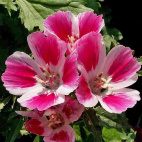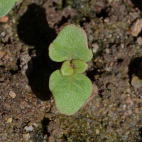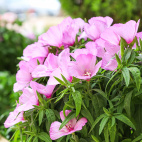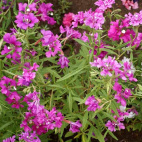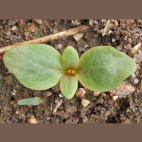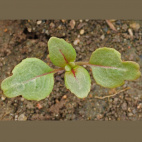Elegant Clarkia Seeds
Clarkia elegans
- HOW TO GROW
- FAST FACTS
HOW TO GROW
Sowing: Direct sow Elegant Clarkia flower seeds on the surface of the soil in early spring, after the last frost. Keep the soil moist until germination, which should take place within 7-10 days. This plant does not transplant well; seedlings can be thinned, though they tolerate crowding.
Growing: The plant needs well drained soil and adapts to seaside conditions, sand, and clay. Keep seedlings free of weeds; water regularly until blooming begins, about 90 days after planting. After this point the plants can tolerate drought, though they do not appreciate excess heat. Pinch off the growing tips to encourage branching and bushy growth. Deadhead spent blossoms. As the plants grow taller, they may need staking or support. This plant usually self-seeds. This plat makes a good addition to flower beds, borders, containers, rock gardens and native wildflower plantings. This plant attracts bees and butterflies.
Harvesting: For long lasting fresh flowers, cut the stems long and place them in water immediately.
Seed Saving: After flowering, this plant will produce long, narrow pods that mature to a dark brown; the ripe seed will be light brown. Collect the ripe pods and spread them out away from direct sunlight to dry completely. Split the pods open to remove the seed. Store Elegant Clarkia flower seeds in a cool, dry place.
FAST FACTS
Common Names: Elegant Clarkia, Garland Flower, Mountain Garland, Farewell-to-spring
Latin Name: Clarkia elegans
Species Origin: US Native Wildflower
Type: Native Wildflowers
Life Cycle: Annual
USDA Zones: 3, 4, 5, 6, 7, 8, 9, 10, 11, 12
US Regions: California, Mountain, Arid/Desert, Plains/Texas, Midwest, Northern, Northeast, Southeast
Seeds per Ounce: 120,000
Stratification: No Stratification
Germination Ease: No Stratification
Sunlight: Full Sun
Height: 20 Inches
Color: Pink
Bloom Season: Blooms Late Spring, Blooms Early Summer
Uses: Cut Flowers
DESCRIPTION
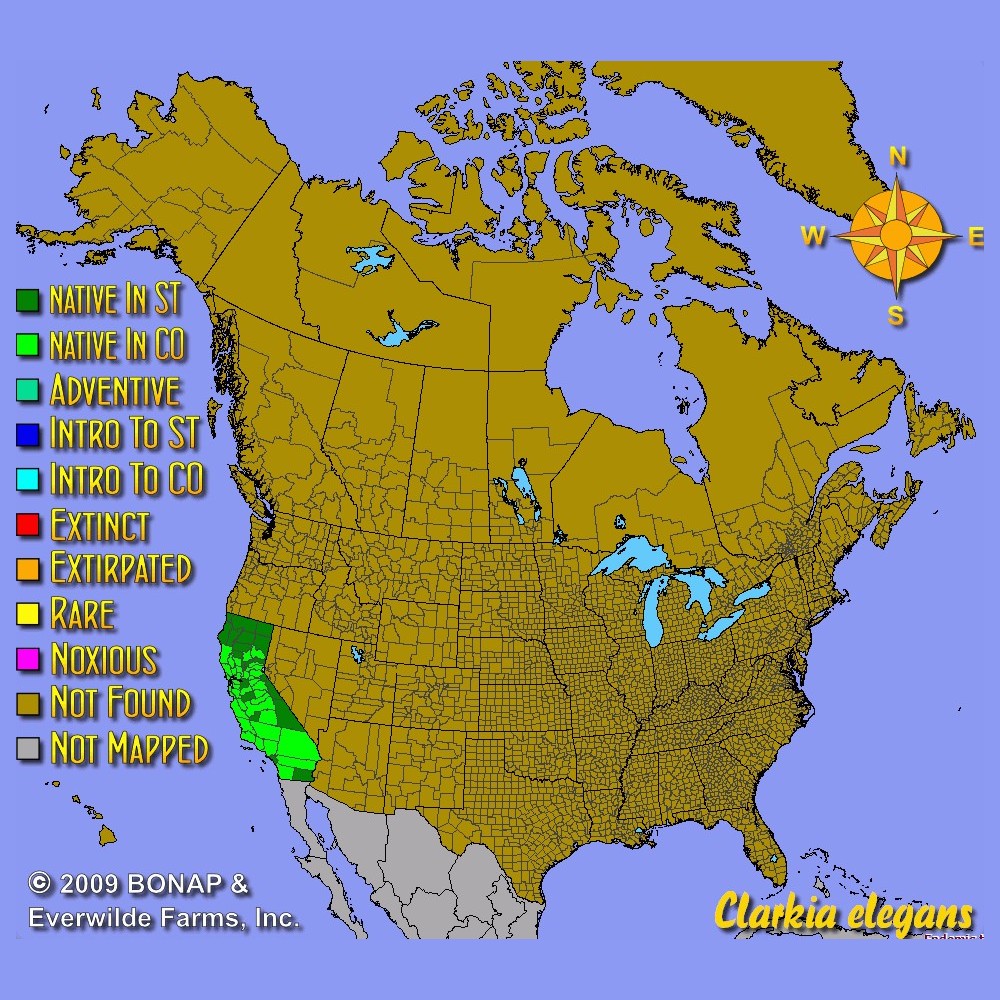
HOW TO GROW
Sowing: Direct sow Elegant Clarkia flower seeds on the surface of the soil in early spring, after the last frost. Keep the soil moist until germination, which should take place within 7-10 days. This plant does not transplant well; seedlings can be thinned, though they tolerate crowding.
Growing: The plant needs well drained soil and adapts to seaside conditions, sand, and clay. Keep seedlings free of weeds; water regularly until blooming begins, about 90 days after planting. After this point the plants can tolerate drought, though they do not appreciate excess heat. Pinch off the growing tips to encourage branching and bushy growth. Deadhead spent blossoms. As the plants grow taller, they may need staking or support. This plant usually self-seeds. This plat makes a good addition to flower beds, borders, containers, rock gardens and native wildflower plantings. This plant attracts bees and butterflies.
Harvesting: For long lasting fresh flowers, cut the stems long and place them in water immediately.
Seed Saving: After flowering, this plant will produce long, narrow pods that mature to a dark brown; the ripe seed will be light brown. Collect the ripe pods and spread them out away from direct sunlight to dry completely. Split the pods open to remove the seed. Store Elegant Clarkia flower seeds in a cool, dry place.
FAST FACTS
Common Names: Elegant Clarkia, Garland Flower, Mountain Garland, Farewell-to-spring
Latin Name: Clarkia elegans
Species Origin: US Native Wildflower
Type: Native Wildflowers
Life Cycle: Annual
USDA Zones: 3, 4, 5, 6, 7, 8, 9, 10, 11, 12
US Regions: California, Mountain, Arid/Desert, Plains/Texas, Midwest, Northern, Northeast, Southeast
Seeds per Ounce: 120,000
Stratification: No Stratification
Germination Ease: No Stratification
Sunlight: Full Sun
Height: 20 Inches
Color: Pink
Bloom Season: Blooms Late Spring, Blooms Early Summer
Uses: Cut Flowers
Also Consider These:
-
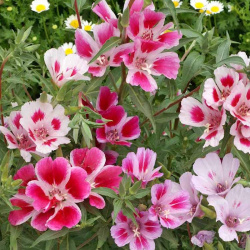 Farewell to Spring Seeds
Clarkia amoena
These satiny, cup-shaped flowers are a lovely herald of summer and are native to the west coast. This annual wildflower is excellent for flower beds, borders, containers, rock gardens, and native plantings.Quick View$2.98 Pkt - $8.46 / Oz
Farewell to Spring Seeds
Clarkia amoena
These satiny, cup-shaped flowers are a lovely herald of summer and are native to the west coast. This annual wildflower is excellent for flower beds, borders, containers, rock gardens, and native plantings.Quick View$2.98 Pkt - $8.46 / Oz -
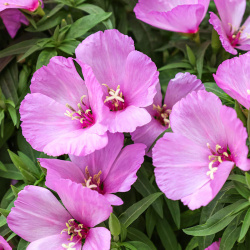 Out Of Stock
Lilac Godetia Seeds
Clarkia bottae
Native to southern California, these beauties feature lavender blossoms. This wildflower is grown as an annual in the north and is great for flower beds, borders, containers, rock gardens, and native plantings.Quick Viewx
Out Of Stock
Lilac Godetia Seeds
Clarkia bottae
Native to southern California, these beauties feature lavender blossoms. This wildflower is grown as an annual in the north and is great for flower beds, borders, containers, rock gardens, and native plantings.Quick ViewxLilac Godetia Seeds
Clarkia bottae
Native to southern California, these beauties feature lavender blossoms. This wildflower is grown as an annual in the north and is great for flower beds, borders, containers, rock gardens, and native plantings.
$3.48 Pkt - $13.34 / Oz -
 On Sale!
Deerhorn Clarkia Seeds
Clarkia pulchella
Delicate as fairies' wings, this variety showcases eye-catching pink blossoms. This annual wildflower is great for flower beds, borders, containers, rock gardens, and native plantings.Quick View$3.25 Pkt - $14.49 / Oz
On Sale!
Deerhorn Clarkia Seeds
Clarkia pulchella
Delicate as fairies' wings, this variety showcases eye-catching pink blossoms. This annual wildflower is great for flower beds, borders, containers, rock gardens, and native plantings.Quick View$3.25 Pkt - $14.49 / Oz -
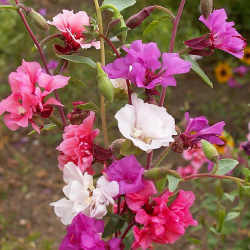 Clarkia Seeds
Clarkia unguiculata
Enjoy a profusion of bright colors with these showy spikes from coastal California. This wildflower is grown as an annual in northern areas and is great for flower beds, borders, containers, rock gardens, and native plantings.Quick Viewx
Clarkia Seeds
Clarkia unguiculata
Enjoy a profusion of bright colors with these showy spikes from coastal California. This wildflower is grown as an annual in northern areas and is great for flower beds, borders, containers, rock gardens, and native plantings.Quick ViewxClarkia Seeds
Clarkia unguiculata
Enjoy a profusion of bright colors with these showy spikes from coastal California. This wildflower is grown as an annual in northern areas and is great for flower beds, borders, containers, rock gardens, and native plantings.
$2.98 Pkt - $8.46 / Oz






